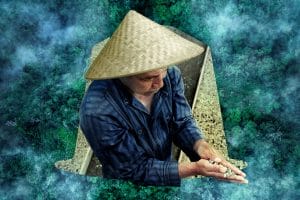
Shutterstock
Coffee has long been established as a drink of importance since the very beginning of time. On a corporeal level, the properties of coffee awaken us and boost our energy. On a more cultural plane, the significance of coffee has helped shape history. Not only to enjoy a burst of flavor and physical vigor, but coffeehouses have also become synonymous with the exchange of ideas. Coffeehouses, it can be said gave birth to the French and American Revolutions. Coffee-drinking spots became egalitarian spaces, bringing people together regardless of their status or occupation and fuels design and thinking.
As the world becomes increasingly familiar with its great impact, the question now on our minds is: how is it made?
It is not surprising that coffee farming has become the source of income for millions of households around the world. However, it is unknown to us if those who produce that delightful cup so fundamental in our morning routines are indeed protected against abrasive agrochemicals. Or are they truly benefiting from the global coffee prices? The answers to these questions are where Nespresso excels. Through the Nespresso AAA Sustainable Quality program, the coffee giant has developed important partnerships with local coffee farmers and coffee experts specific to the main areas that comprise the ‘Bean Belt”, naming them Master Origins. These Master Origins are zones worldwide that are known to generate the best-tasting coffee from the beans harvested there, all manufactured in different ways to create diverse tastes.
We take you on a tour of Nespresso’s Master Origins and how these landscapes are changing through innovative and fair farming practices:




